#Aquaponic farming
Text
Beyond Organic: How Aquaponic Farming is Revolutionizing Agriculture
Beyond Organic: How Aquaponic Farming is Revolutionizing Agriculture
Aquaponic farming is emerging as a game-changer in the field of agriculture. This innovative farming method combines aquaculture (the rearing of fish) with hydroponics (the cultivation of plants in water) to create a mutually beneficial ecosystem. The result is a highly efficient and environmentally friendly approach to growing…
View On WordPress
#agriculture#Aquaculture#Aquaponic farming#Educational opportunities#hydroponics#organic farming#Pesticide-free#sustainability#urban farming#Water conservation
0 notes
Text
#organic agriculture#aquaponics#aquaculture#symbiotic relationship#love#permaculture#education#entrepreneur#small business#join us#support communities#youth of america#farm
22 notes
·
View notes
Text
Closing Loops in Soilless Gardening - Hydroponics and Aquaponics
What is the future of food production going to look like? Is the projected 10 billion people in 25 years, out of which two thirds will live in cities, going to require us to convert every square meter of arable land into intensive mono cultural farms? Please don't let that be true! There HAS to be some alternative. Fortunately, there are several. Two of them are different ways of growing plants without soil, a radically new method, which may be most appealing to urban food production.

image source
Hydroponics: Growing Plants in Water
When it comes to growing large amounts of food on a small area efficiently, hydroponic systems are often brought up as a solution. And the reasons sound pretty convincing: An efficient hydroponic farm uses 90% less water, and can yield 3-10 times the amount of produce per area, with 7-14 growth cycles in a year. IMPRESSIVE! But before getting too excited, let's not forget: the devil is in the details! It's worth looking into under exactly what conditions those plants grow, being fed by what light, and most importantly which nutrients, and where they come from.
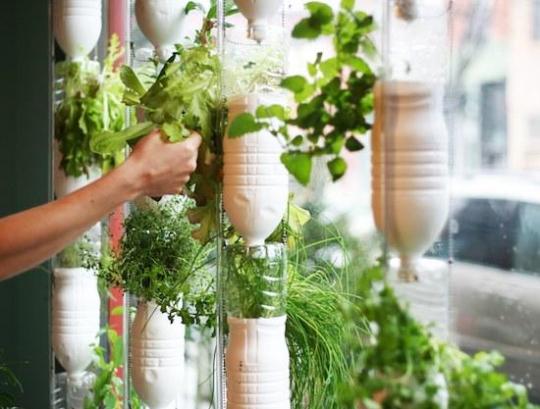
image source
The basic concept, however, of growing plants vertically, in mostly water, with some kind of substrate, such as clay balls or vermiculite, is actually a pretty nifty way to grow food where there are no fields. The most basic form of this may be the Windowfarm technique, which I experimented with myself years ago in my Budapest apartment. Going to Shanghai, the whole idea seems to be taken to a whole new level.
https://static.dezeen.com/uploads/2017/04/sunqiao-urban-agricultural-district-Sasaki-architecture-industrial-china-shanghai_dezeen_hero-b.jpg
image source
Is That Really Sustainable? Or Even Healthy?
… not to mention, does hydroponics even fit into Permaculture? Because let's be honest: with a system that needs to be constantly managed and monitored you could not be further from a self-supporting ecosystem. Also, what exactly do those plants get to eat? The typical N-P-K made industrially out of petrochemicals? Most likely. So while it certainly reduces the transport related drawbacks, hydroponics is by no means energy efficient, and the nutritional value won't be any better than your most industrially grown veggies.

image source
How Does Aquaponics Compare?
Okay, so let's bring in the fish! For those not familiar with the difference between the two systems, aquaponics is the combination of hydroponics and aquaculture, which are simply fish farms. Having fish in a tank, they will naturally defecate into the water, requiring it to be changed regularly. Plants, however love to eat those nutrients that the fish excrete. Or to be more exact, they feed on the nutrients that have been converted by bacteria and other microbes. The ammonia will turn in to nitrites, which in turn become nitrates, that is food for the plants.
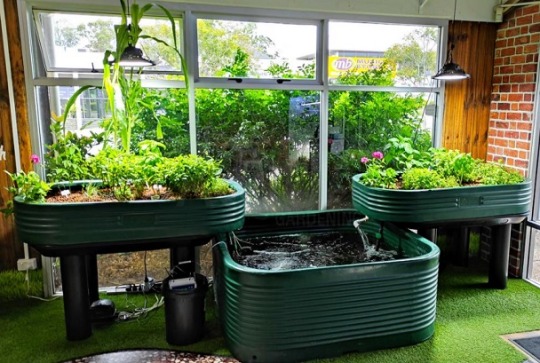
image source
So running the water from the fish through the plants growing substrate will on one hand feed the plants, as well as clean it for the fish to enjoy it again. So the system already closed a few loops there, making it more sustainable than just mere hydroponics. Also, the inclusion of microbes already offers a more diverse environment, bringing the system a bit closer to an ecosystem. But let's not get ahead of ourselves: Aquaponic systems still need close monitoring, as they are still a far cry from a self sustaining ecosystem of let's say a pond. Also, the water circulation / aeration is most likely going to require a pump, and depending on the exact setup of the system, maybe artificial lighting for the plants. All these aspects add to the energy requirement of the aquaponic system.
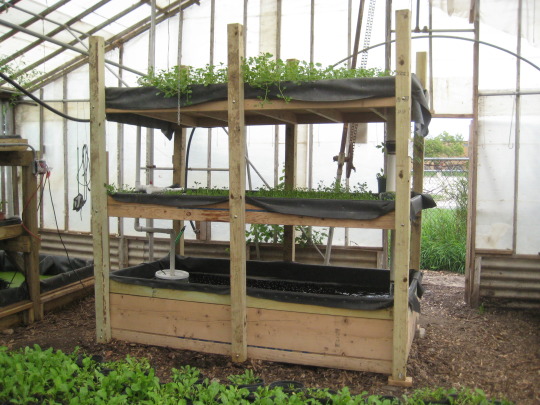
image source
A Truly Closed Loop? Consider the Food of the Fish!
When praising the sustainability of aquaponics, one thing that mustn't be ignored is the source of the fish food. Just like with the hydroponic systems, where the food for the plants or the fertilizer is considered, we can't ignore the feed we give to our fish to eat. If it is the same industrial feed, we may as well have kept to our hydroponics. Not true, since including fish already makes our system more diverse. So instead, let's continue in that same direction. What do fish eat? What is good for them? How can we grow that food ourselves?

image source
Making Your Own Sustainable Fish Food
Here I could probably start a number of individual posts, since talking about fish food is like opening up a can of worms. But fortunately, I already have a number of appropriate things written. Talking about worms, by the way, anyone who has been fishing knows that they are a favored delicacy, and anyone who composts will have no shortage of them. Since worms are mostly vegetarians, and many of us eat meat, it may have been a bit difficult to properly compost greasy, meaty, bony food wastes. That's where black soldier flies come in, whose larvae are also frequently mentioned for fish food. I still need to try growing those guys. As for green plants for the fish, duckweed makes also good fish feed, again something I have no experience with. What I do know, though, is spirulina, which is also super rich in nutrients, and I would be surprised if the fish didn't like it. So I can see throwing some composting worms, black soldier fly larvae, and spirulina into a blender, to make some great nutritious fish food. At the moment this is very theoretical for me, though.

image source
Don't Give Up the Soil Completely
So does this mean we should all focus on setting up our most sustainable fish-plant-compost combo cycles? Hells yeah! But please not at the expense of everything else! Soilless gardening, as exciting and revolutionary as it may sound, is still that: without soil. And let's face it: neither us, nor our beans and tomatoes, have evolved to live entirely without soil. That just seems wrong. Even in a small urban apartment it's worth having a bit of soil on your roof, balcony, or window sill, where you can dig your hands into a world of healthy microbial diversity on occasion. And if you do have the space, by all means, set up a pond, a dam, or another aquatic ecosystem, where fish, and frogs, and dragonflies, and numerous other species can live together without relying on our management. Apart from looking pretty, they will also provide food for us, that is nutritionally superior to anything industrially grown.
Sources: 1, 2, 3, 4, 5, 6, 7, 8
115 notes
·
View notes
Text
[PDF] Aquaponic Gardening: A Step-by-Step Guide to Raising Vegetables and Fish Together - FREE
#prepping#aquaponics#preparedness#prepper#survival#shtf#survivaltips#survive#farming#selfreliance#homesteading
8 notes
·
View notes
Text
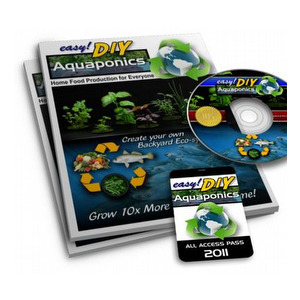
DIY AQUAPONICS
Aquaponics is a type of sustainable food production system that combines aquaculture (raising fish) and hydroponics (growing plants in water without soil). In an aquaponics system, fish are raised in a tank, and the nutrient-rich water from the fish tank is then circulated through a hydroponic plant growing bed, providing the plants with the necessary nutrients for growth.
The plants absorb the nutrients and help to filter the water, which is then returned to the fish tank, creating a closed-loop system that is highly efficient and environmentally friendly. The fish waste provides a source of natural fertilizer for the plants, while the plants help to purify the water for the fish.
Aquaponics is becoming increasingly popular as a sustainable method of producing fresh produce and fish for local communities, as it requires significantly less water and energy than traditional farming methods and is highly scalable, making it suitable for both large-scale commercial operations and small-scale home gardens.
14 notes
·
View notes
Text


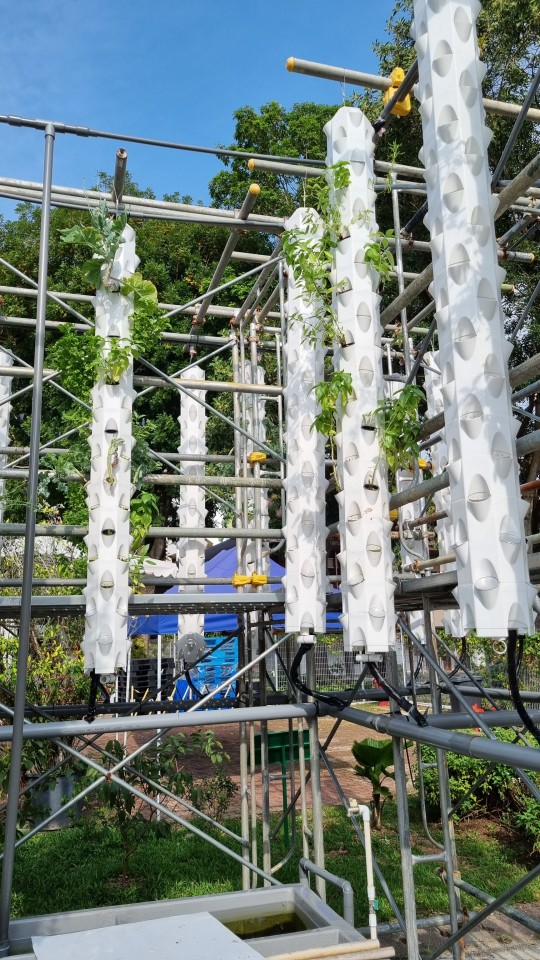



Some pics from my visit to an urban farm :)
Showcasing aeroponics + aquaponics (first 5 pics) and hydroponics (last pic) -- sustainable food production methods and alternatives to traditional farming!
A little presentation my group made about it, under the cut:

(company name censored oop)
For the DIY Hydroponics - I have a mint plant growing in water (+ nutrient solution, the hydroponics system) at home now :D
#this was for a 3-week (? i think) course related to the environment sector#i had to draw those red diagrams and i cANT ART but they turned out okay#aa it was so fun i miss the times when the curriculum didn't start yet#my posts#look at the cute little culantroooo#hydroponics#aquaponics#aeroponics#plants#plantblr#urban farming#got distracted and accidentally posted this too early while editing a photo LOL#😭 anyways it's posted
13 notes
·
View notes
Text

Learn more: https://hydroponicway.com/how-to-grow-plants-with-the-kratky-hydroponics
The Kratky hydroponic growing technique is simple, effective and easy to use.
However, it can be improved upon with these tips.
#sustainability#gardening#farming#hydroponicfarming#hydroponics#hydroponicsystem#gardeningtips#verticalfarming#aeroponics#aquaponics#agriculture#agriculturetechnology#agritechnology#garden#indoorfarming#sustainable#gardening101#agritech#urbanfarming#verticalgarden#indoorgarden#future#diy#food#healthyfood#hydroponic#hydroponicgarden#growlight
8 notes
·
View notes
Text
youtube
Is Aquaponics the Future of Agriculture? We have to find better ways to produce the food we all need. The solution could lie in one of several promising farming techniques like hydroponics, vertical farming, or aquaponics. That last one has technically been around since ancient times, but has been gaining a lot of interest recently. How is this old technique of farming with fish getting revived? Can nextgen tech really build a mini ecosystem that creates more food with less water? Could aquaponics be the future of farming?
Watch 137 Year Old Battery Tech May Be The Future of Energy Storage • 137 Year Old Batt...
Video script and citations:
https://undecidedmf.com/is-aquaponics...
Get my achieve energy security with solar guide:
https://link.undecidedmf.com/solar-guide
Follow-up podcast:
Video version - / @stilltbd
Audio version - http://bit.ly/stilltbdfm
#Undecided with Matt Ferrell#solarpunk#aquaponics#hydroponics#vertical farming#farming#fish farming#farm#fish farm#growing food#Youtube
6 notes
·
View notes
Text
Exploring the Revolutionary World of Aquaponic Farming
Have you ever imagined a farming system that combines fish farming and plant cultivation in a symbiotic relationship? Welcome to the revolutionary world of aquaponic farming! In this blog post, we will dive deep into the concept of aquaponics, uncover its benefits, and shed light on its potential to transform the way we produce food sustainably.
What is Aquaponic Farming?
Aquaponics is an…
View On WordPress
#Aquaculture#Aquaponic farming#Efficient farming#Fish farming#hydroponics#Plant cultivation#Recirculating system#sustainable farming#Sustainable food production#urban farming
0 notes
Text
Aquaponic Farms - Nelson & Pade Aquaponics
Aquaponic farming produces food in a sustainable and efficient manner. Aquaponic Farms uses 95% less water to grow vegetables and fish than conventional methods. It is popular among entrepreneurs, educators, and missions as well as governments. Aquaponic systems can go anywhere. They can be used outside, in a greenhouse or in your home. You can turn any space into a productive garden by using grow-lighting. Aquaponics depends on the continual recycling of nutrient rich water. In aquaponics with Nelson and Pade, there is no toxic run-off from either aquaculture and hydroponics.
0 notes
Text
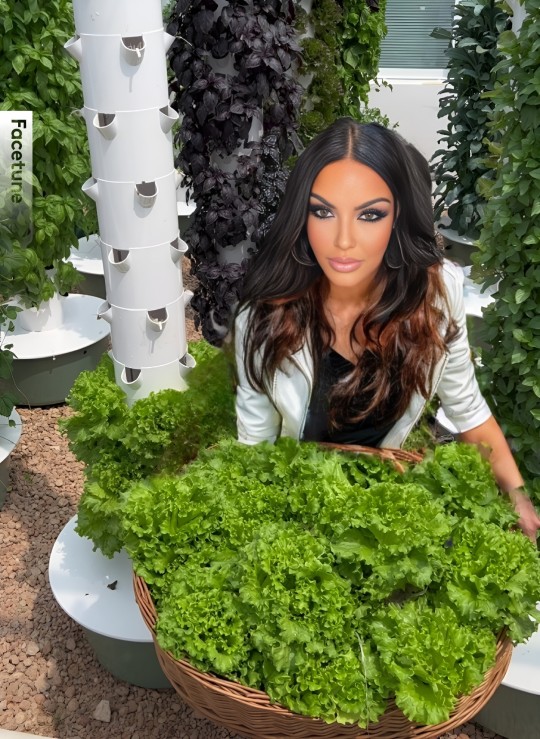
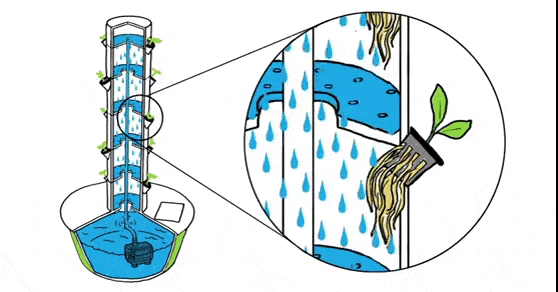
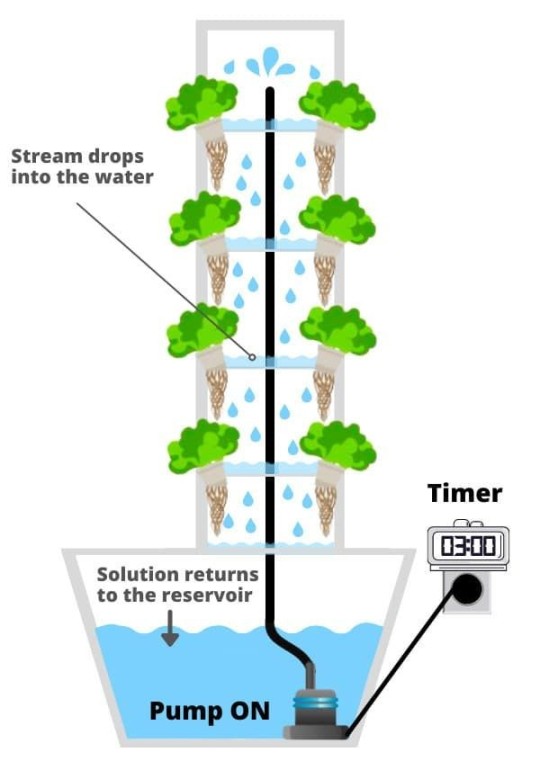

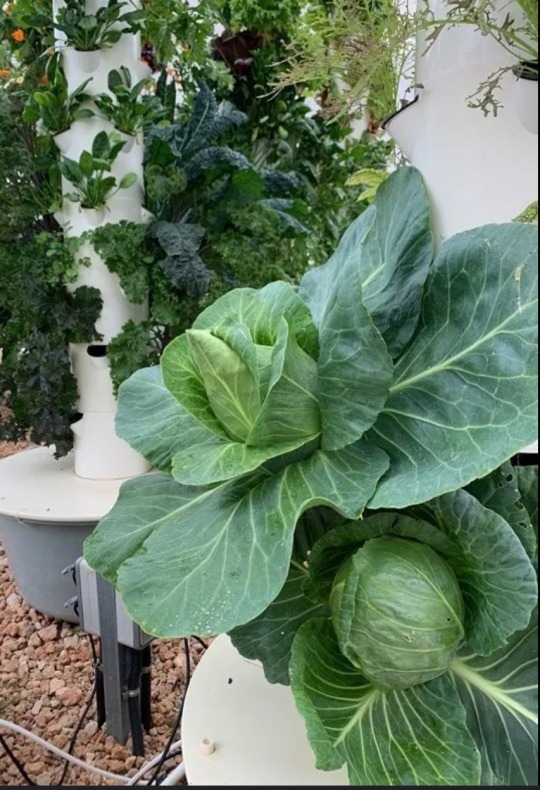
#creative inspiration#education#vertical farming#aquaculture#aquaponics#all natural#science#entrepreneur#organic agriculture#organic farming#self love#herbal remedies#inspiration#love#shrimp#garden#sustainability#farm#farming#sale#growyourbusiness#grow food#knowledge#nature#earth
2 notes
·
View notes
Text
GROWING HERBS IN JARS

If you have a glass jar and access to fresh water, you can grow a supply of herbs right on your windowsill! While any medium-sized container will do, Mason jars are particularly cute! You could also head to your local thrift store and stock up on a few decorative glasses for cheap.
The next step is to choose the right herb. Check out this list of 12 herbs you can grow in water. This hard-to-mess-up method is a great option for the busy bee who doesn’t have time (or the desire) to deal with soil.
1. Peppermint
Grow peppermint in a jar and snip off a bit to make herbal tea, oil or soup. You can also just enjoy the sweet scent of this fragrant herb. Peppermint does well in partially sunny or shady windows.
2. Oregano
You can use fresh oregano straight in pasta sauces, soups and other savory dishes. Just use a pair of kitchen scissors to gently remove a few leaves from the stem. Oregano can grow quite large, so keep an eye on your plant.
3. Sage
Sage has a flavorful scent which makes it a popular choice for holistic purposes. You can also use sage with eggs, chicken, lamb or pineapple. Snip as much as you need and add it to your favorite dish. Sage doesn’t need a ton of water and should be kept in moderate sunlight.
4. Basil
This popular Italian herb grows well in water and can be used in many different recipes including sauces and soups. Make sure your basil jar gets about 6 to 8 hours of sunlight per day.
5. Stevia
This hardy herb prefers a bit of sun but can grow just as well in shadier areas. You can use the leaves off of this herb to sweeten your tea of coffee naturally! You can also create a powder from the leaves to use as a sweetener.
6. Thyme
Thyme is a versatile herb. It will flower, and the flowers are edible. You can also harvest it before it flowers, hang the stems to dry the leaves and then remove the leaves to use in cooking. Thyme needs plenty of sunlight, so set those jars in a bright window.
7. Rosemary
This flavorful herb does well in sunlight or partially shaded areas. It will grow better in full sunlight though. Use your growings to spice up your favorite chicken dish!
8. Lemon balm
You can use the lemon balm herb to create an herbal tea that helps reduce anxiety, relieve symptoms of indigestion and helps make sleeping a little easier. Give this plant plenty of sunlight.
9. Chives
This onion family member is super easy to grow, and you can use it in a ton of dishes. Make sure this herb has plenty of water and sunlight for best growth results.
10. Cilantro
Cilantro prefers plenty of sunlight, though partial shade works okay too. Use this flavorful herb to add an extra punch to your salsa and other Mexican-inspired dishes.
11. Lavender
Lavender can be used to soothe depression symptoms, ease migraines and cramping and promote better sleep. Use lavender leaves to make a tea or an oil. Added bonus: lavender smells fantastic! This herb needs the sun and fresh air to thrive, according to Bonnie Plants.
12. Marjoram
This herb does really well indoors, though it grows best in full sunlight. This herb is a bit slower to grow, so you may need a little patience. Use this herb to spice chicken and beef dishes. Some people prefer to create an oil for lotions and bath soaps too.
#junko on the farm#gardening#garden#herb garden#herbs#fresh herbs#mason jars#hydroponics#grow#aquaponics#organic#homesteading#peppermint#basil#rosemary#oregano#chives#lavender#lemon balm#sage#stevia#thyme#cilantro#marjoram
6 notes
·
View notes
Text
@fa-q-shrimpco 🇺🇸 🦐 - SW - FL - @Florida_Aquatic_Quality 🏖️ 👕 - Est. 2023 -
#florida#shrimp#shrimp farm#fish farming#fish farm#seafood#sea#aquaculture#ocean conservation#aquaponics#food#restaurant#restaurants#calories#Calorie#SWFL#Naples#Miami#Tampa#Orlando#FortMyers#FL#FLA#FGCU#FSU#UF#UCF#USF#FIU#FAU
5 notes
·
View notes
Text

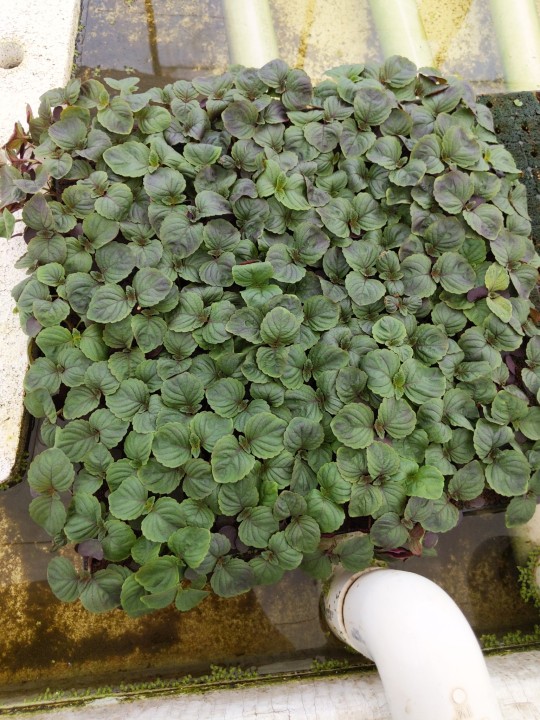
Sure wish I liked, like, any of the food we grow at work. It looks great and yummy and then I put it in my mouth and it says bleagghk!
#succygirl works#not succulents#plantblr#plants#farming#Aquaponics#please don't tell me to cook it this way or that way#i dont have the spoons for cooking
12 notes
·
View notes